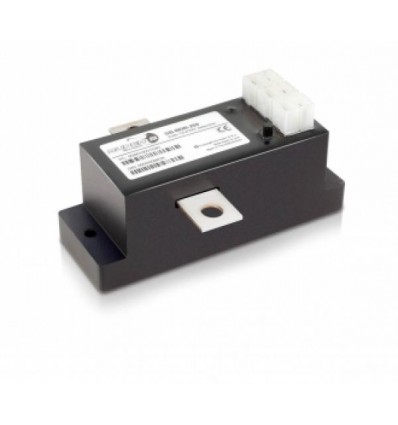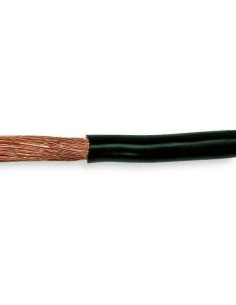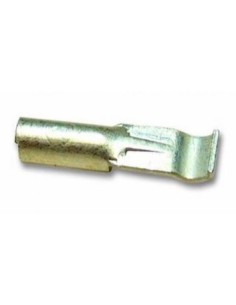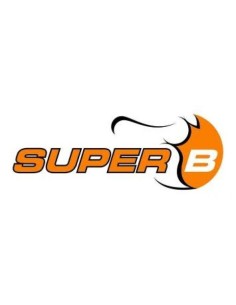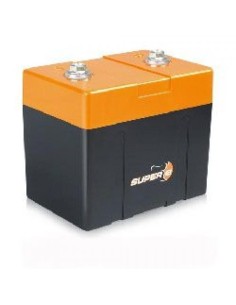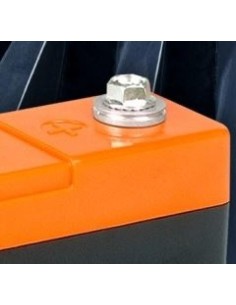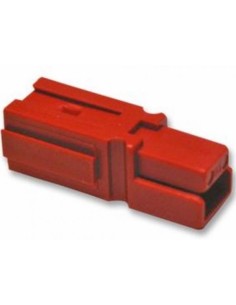Regulation Relay DBD 250 SUPER B Li-Ion Batteies
SB BDB250 Super B is an External Regulation Relay This is an under and overvoltage protector, to secure super B starting and tractions batteries against under- and overvoltage with the lowest possible stand-by current.
SB BDB250 REGULATION RELAY FOR Super b li-ion battery 2.5a / 14.4v
Super B external under and overvoltage protector, to secure super B starting and tractions batteries against under- and overvoltage with the lowest possible stand-by current.
Boot
Before the BDB-250 becomes operational, it has to determine if a 12V or a 24V system is connected. This means that after connecting the BDB-250, the first thing it does is wait a second before doing anything else. After this, if the input voltage is above 10.0V below and 15.4V, the relay will close. If these conditions are not met, the relay will open.
High voltage
If the input voltage rises above 15.0V, the LED will start blinking to indicate a detected overvoltage. This will continue for 90 seconds after which the relay will be opened and the LED will turn off.
When the voltage rises above 15.4V, the entire “warning” process will be skipped and the relay will switch off immediately.
Low voltage
If the input voltage drops below 10.0V, the LED will blink to indicate an under-voltage situation. This will continue for 90 seconds after which the relay will be opened and the LED will turn off.
RESET
When the BDB-250 is switched off and the voltage returns between 11.0V and 14.0V, there are two ways to re-activated it.
If the user has chosen the automatic reset function, the relay of the BDB-250 will be activated directly after a “correct” voltage has been measured. However, when the manual reset function has been programmed, the user has to reset the BDB-250 by hand. This is done by pressing the build-in switch. If an external switch is connected to the remote input, this can also be used to reset it manually. The manner in which the BDB-250 will be reset is programmable by the user. The manner in which this is done can be found under 'Programming'
Programming
The user can choose if the BDB-250 is reset manually or automatically. This is done by pressing the programming button and holding it down until the LED flashes. This indicates that the BDB-250 is in programming mode. At this point the button must be released.
When the button is pressed once now, the automatic reset function is selected. If the user presses the button twice, the manual reset is selected.
Approximately 4 seconds after the last time the button is pressed, the LED will blink to show the programmed reset function. (e.g.: If position 2 – manual reset – is selected, the LED will blink twice.)
Technical specifications
|
SKU |
958610031040 |
|
Autodetect 12V |
8V to 20V |
|
Autodetect 24V |
20V to 35V |
|
Current consumption |
2mA |
|
Input surge current (100ms) 12V mode |
2,6A |
|
Input surge current (100ms) 24V mode |
5,0A |
|
Switch current Continues |
250A |
|
Switch current Peak |
1,500A |
|
Dimensions WxHxD |
82x57x120 mm |
|
Weight |
370 g |
---------------------------------------------------------------------------------------
DISCLAIMER
THIS MESSAGE IS IMPORTANT.
If you have ordered and will receive a SUPER B XXX Light Battery
CAUTION:
- BEFORE CONNECTING YOUR SUPER B BATTERY,
CHECK THE CORRECT OPERATION OF YOUR RECTIFIER REGULATOR
IMPERATIVE : MAX 14,2 V
If you do not have one, you must order and install it BEFORE USING the Battery
https://aerodiscount.com/en/light-weight-starter-batteries/600-regulation-relay-dbd-250-super-b-li-ion-batteies.html
- ONLY THE CHARGERS RECOMMENDED BY SUPER B MUST BE USED TO ENSURE THE WARRANTY.
SUPER B and Aerodiscount, one of its resellers in France, decline all responsibility and cannot be held responsible
in case of non respect of the recommendations or bad use,
assembly, charging, safety instructions and consequences of the use of batteries in ultralight aeronautical applications,
and this even if they are not subject to aeronautical regulations.
Use at your own risk.
However, in the event of a manufacturing defect, the usual warranty applies.

